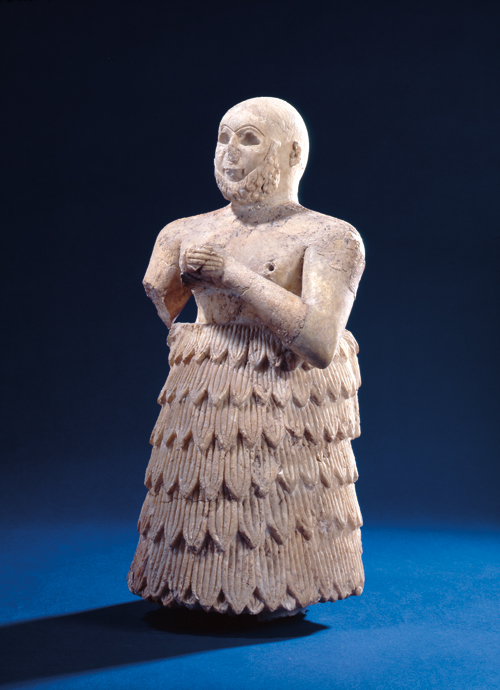Legal Matters
Germany's dispute over legislating artworks of national significance
Germany's dispute over legislating artworks of national significance

In recent months, a tense discourse has erupted over a proposed new version of Germany’s Act to Protect Cultural Property (Kulturgutschutzgesetz). It’s hard not to feel that behind all the arguing over legal details, there is something more at stake here. It is telling that the figures who are most conspicuously mounting the barricades on this issue are collectors and dealers of modern and contemporary art.
Germany already has legislation covering the illegal trade and export of nationally significant cultural assets, but a new, expanded version is needed to bring German law into line with European Union guidelines and a UNESCO convention that dates back to 1970. So far, so reasonable. However, non-involved onlookers have been astonished by the vehemence of the dispute over a legal amendment that merely aims to improve existing regulations. It should have been possible, through civilized discussion, to arrive at a proposal acceptable to all parties. Instead, a public mudslinging match has ensued, during which each side has studiously ignored the other’s arguments.
The main obstacle to getting the new version of this cultural-protection act passed, it turns out, is that the law addresses two issues that are only indirectly linked. The first involves identifying and repatriating cultural assets that have been illegally acquired and imported. This applies almost exclusively to antiquities and indigenous artworks. With the dissolution of entire societies in the Middle East, theft from archaeological sites and illegal trading have acquired an explosive topicality that calls for swift action. This has hardly been contested. However, state officials and archaeologists have placed the entire art market under suspicion and are pointing to flimsy evidence. Mention is often made of the annual illegal trade in antiquities being worth €5 to €6 billion (gbp £3.5 to £4.5 billion), and of Germany as being a focal point for this dark market. The first claim is demonstrably based on the invention of an Italian journalist; and, as to the second, there is no real proof. Nevertheless, with the issue of allegedly looted art, it’s obvious that a compromise must be found. Instead, all parties are using disputable point from the proposed new bill as munition in the dispute over the ‘twin’ issue here: how to control the export of modern artworks of ‘national significance’.
Ensuring public access to cultural assets of attested national significance has long been standard legal practice. The export of artworks to non-eu countries is subject to checks in cases where items exceed specific limits of age and value. These currently lie below the ceiling figures – 70 years and at least €300,000 (GBP £220,000) – proposed in the new law. So, if a classic modernist painting is to be shipped to, say, the us, even on a temporary basis, it must be checked against the current list of nationally significant cultural assets.
The truly incendiary issue now, though, is that the movement of goods within the eu is also to be subject to authorization. Under the proposed legislation, every artwork that fulfils the age-and-value criteria would need an export licence from a commission of the relevant federal state of Germany, with a statutory processing time of ten days. This wholly unrealistic clause will lead either to bureaucratic chaos or claims being waved through unchecked during busy periods.
Initially, outrage was provoked by a draft of the bill that contained absurd clauses so obviously violating Germany’s constitution – the Grundgesetz – that it should have been clear to everyone from the outset that they wouldn’t make the final draft. Collectors and dealers were up in arms, as talk began of compulsory expropriation of artworks, and people prophesied that the market for German artists would collapse as a result of their works being unable to leave the country, thus dramatically reducing their value. Collectors threatened to withdraw pieces from German museums, or to move them abroad entirely. This hysteria was encouraged by a few museum officials revelling in the prospect of buying artworks at lower prices.
Extreme free-market proponents, on the other hand, have acted as if the concept of ‘nationally significant cultural property’ should be abandoned entirely. ‘Art thrives on exchange’ may be their motto, but what they really mean is the unhindered movement of goods. Such a stance is presumably based on the fact that art has customarily been one of the few fields that is subject to comparatively few trade restrictions, and is often used to optimize tax obligations. And, apparently, some people have interpreted this as the basis for a kind of customary right. In light of this, improved protection of cultural assets would be just a first step on the path towards transparency and fiscal stringency in the art market.
In recent decades, however, Germany has not maintained a good track record for passing robust legislation. The country’s coalition governments often negotiate bad compromises that are then regularly rejected by the constitutional court or sent back to parliament for revision – and there is little impetus to improve the situation because the revised bill is not usually submitted again until the next legislative period. But the resulting legal uncertainty cannot be in the interests of art dealers or museums, even less the art-collecting citizen. Translated by Nicholas Grindell.
























